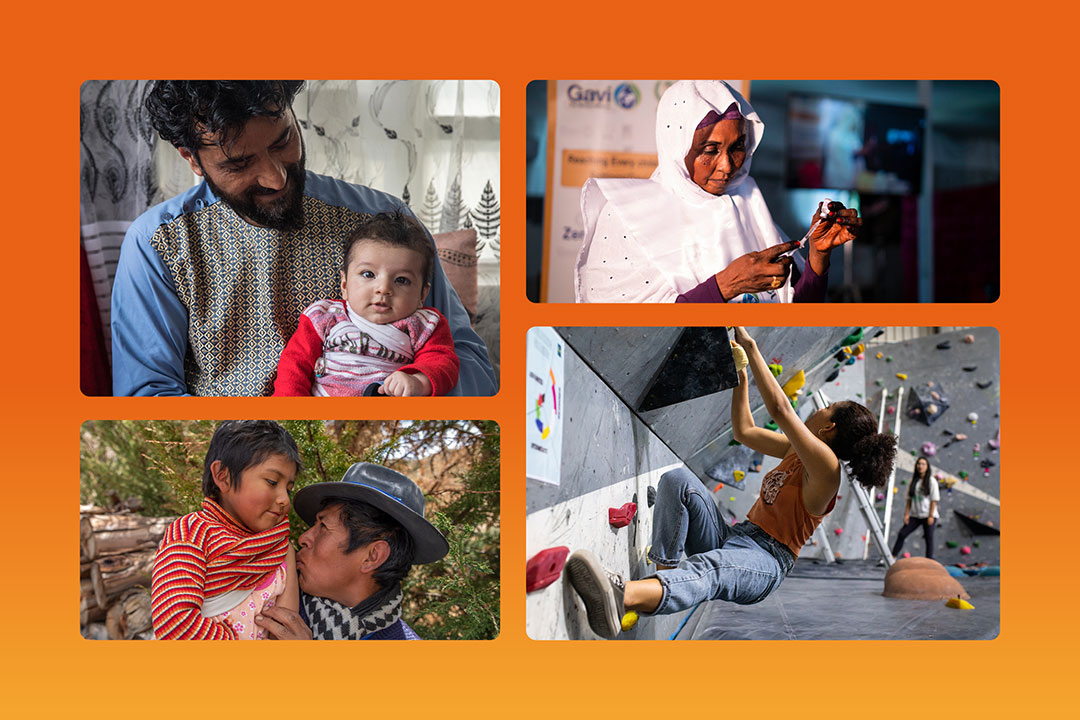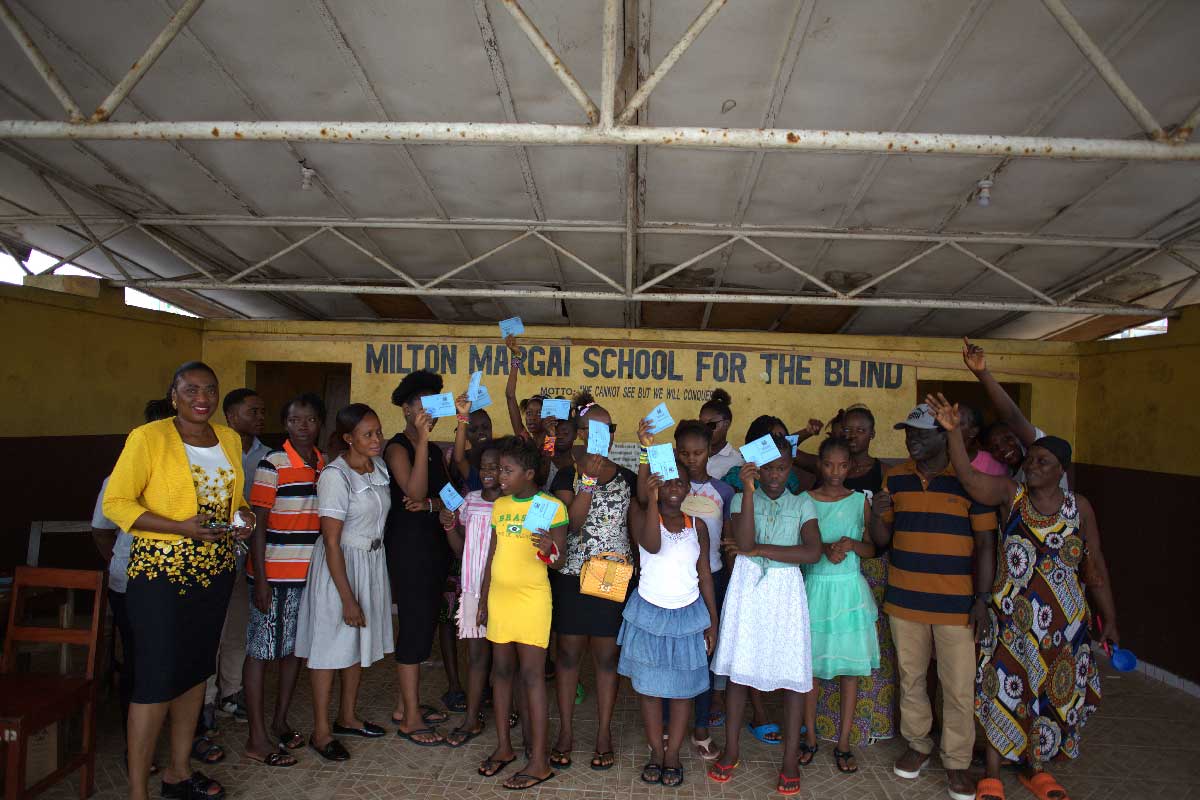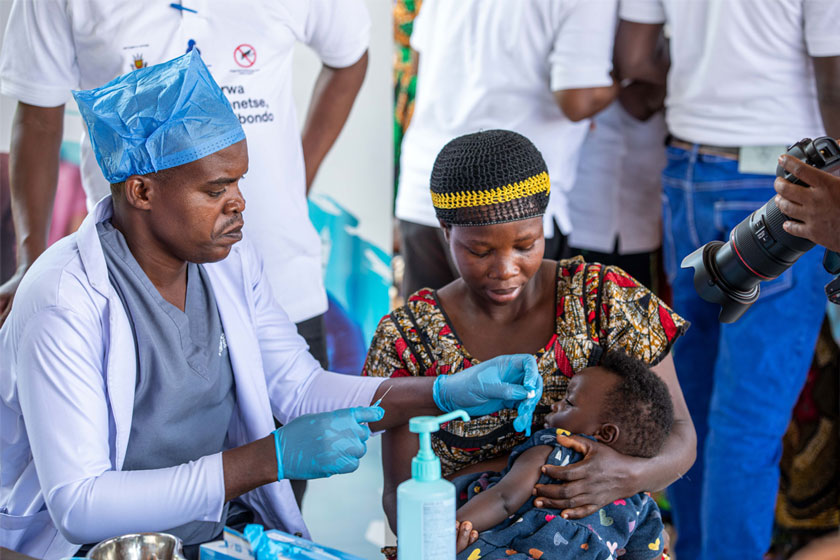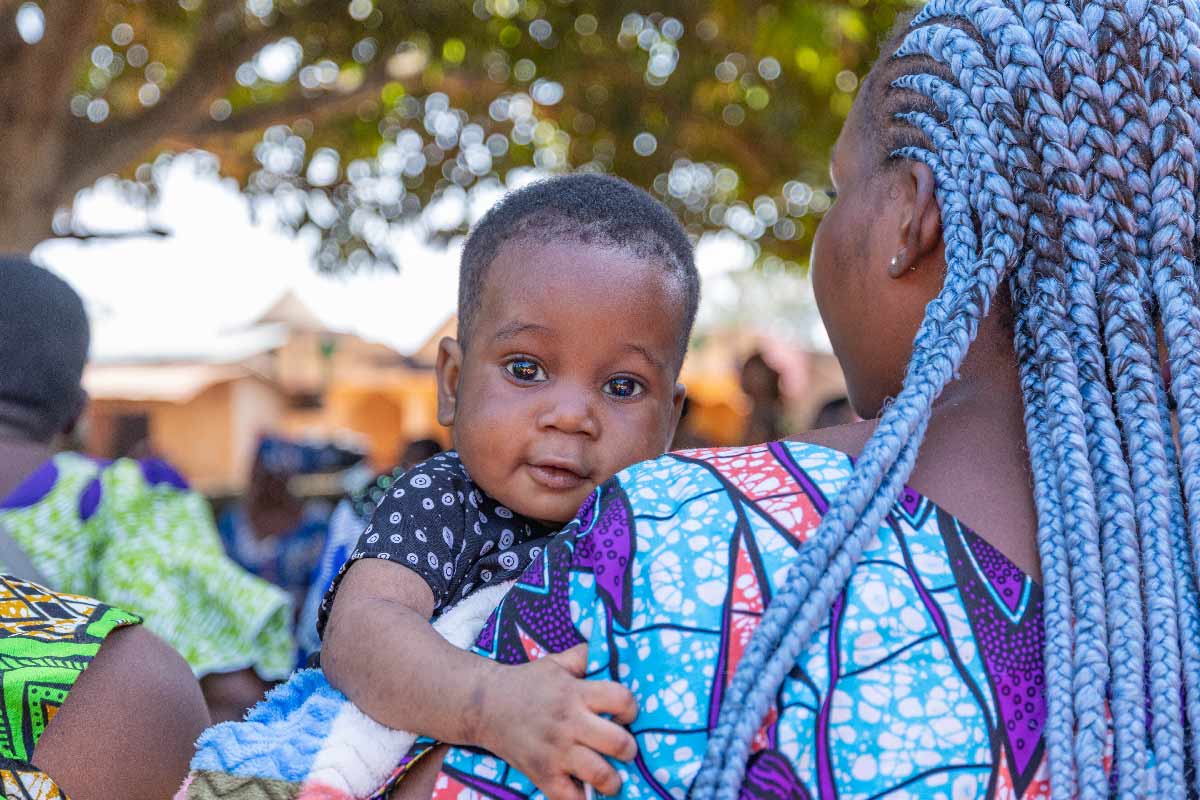Gavi’s impact on the world in 2022: 7 key statistics
Gavi’s 2022 Annual Progress Report highlights the impact of investment in immunisation across 57 Gavi-supported countries.
- 28 September 2023
- 5 min read
- by Gavi Staff

Historically high levels of investment are spurring the recovery of routine immunisation services from pandemic-related disruption, but there are significant challenges ahead as countries seek to balance other priorities – including climate change, deforestation, conflict and migration. Also, while this rebound in immunisation is encouraging, coverage remains uneven across and within countries, with children paying the price.
Gavi’s 2022 Annual Progress Report charts recent progress and highlights the scale of the challenges ahead. Here are seven key statistics outlined in the report.
By preventing death and enabling people to live longer, healthier lives, immunisation can have economic benefits for individuals and societies, such as increased productivity and wages, and reduced healthcare costs.
1. US$ 162 million was committed to co-finance Gavi-supported vaccines in 2022
While Gavi provides financial support to lower-income countries to purchase vaccines and build the infrastructure to deliver them, countries must co-finance a portion of the required vaccine doses, with this contribution gradually increasing in preparation for the eventual phasing out of Gavi support. This encourages governments to invest in new vaccines and plan for financially sustainable immunisation programmes in the future.
In 2022, lower-income countries collectively contributed US$ 162 million to co-finance Gavi-supported vaccines, the highest amount in Gavi’s history. This data highlights that immunisation remains a top priority on the political agenda, and brings the total amount contributed by lower-income countries since 2008 – when country co-financing began – to US$ 1.5 billion.
Alongside the record US$162 million in co-financing contributions, the number of vaccine programmes originally introduced with Gavi funding that are now fully self-financed reached 54 in 2022, up from 40 in 2018.
However, with countries facing multiple social, economic and environmental challenges, even relatively stronger economies at the final stages of transition out of Gavi support may struggle to co-finance programmes. To help these countries, in December 2022 the Gavi Board agreed to extend the accelerated transition phase from five to eight years, alongside other measures.
2. 81% of children received basic protection against disease
These sustained financial commitments are helping immunisation programmes to recover from the disruption wrought by the COVID-19 pandemic. In 2022, the percentage of children receiving all three doses of diphtheria, tetanus and pertussis-containing vaccine (DTP3) – a key benchmark for basic protection – rose three percentage points to 81% across 57 Gavi implementing countries, climbing back to within two percentage points of the 2019 figure, the last year before the pandemic hit.
3. 2.2 million fewer children are receiving no vaccine doses at all
In 2022, the number of zero-dose children – those receiving no doses of basic vaccines – was 10.2 million, down from 12.4 million in 2021. While moving in the right direction, this is still higher than the estimated nine million there were in 2019, and progress across countries and regions is uneven.
Have you read?
4. 56% of children protected against 10 preventable diseases
An important metric guiding the Alliance’s work is the “breadth of protection” against infectious disease. Fifty-six percent of children in Gavi-supported countries are now protected against ten key pathogens – a record high – compared to 53% of children in non-Gavi countries.
The introduction of new vaccines, such as the hexavalent vaccine – which combines antigens from six pathogens into a single vaccine – will reduce both the number of vaccinations needed to protect children and the cost of delivering them.
5. >17.3 million future deaths averted since 2000
One of the ultimate goals of Gavi support is the aversion of deaths caused by infectious disease. By the end 2022, more than 2.4 million future deaths had been averted by Gavi-supported vaccinations since Gavi’s latest strategic period began in 2021.
The cumulative number of deaths averted since 2000 through 2022 is more than 17.3 million. In addition, more than 2.7 million deaths were averted by the distribution of COVID-19 vaccines through COVAX across participating low- and middle-income countries.
6. US$ 220.5 billion in economic benefits since 2000
By preventing death and enabling people to live longer, healthier lives, immunisation can have economic benefits for individuals and societies, such as increased productivity and wages, and reduced healthcare costs. The report highlights that immunisation programmes in lower-income countries supported by Gavi have generated more than US$ 220.5 billion in economic benefits since 2000.
A recent study covering 73 Gavi-supported countries predicted that, for every US$ 1 spent on immunisation in the 2021–2030 period, US$ 21 would be saved in health care costs, lost wages and lost productivity due to illness and death.
7. 19 manufacturers now supplying Gavi-supported vaccines
Healthy immunisation programmes require healthy vaccine production ecosystems to support them, and the number of manufacturers supplying pre-qualified Gavi-supported vaccines has increased from five in 2001 to 19 in 2022.
However, some regions – in particular, Africa – remain critically under-served. Gavi published a white paper in 2022 outlining plans to expand sustainable vaccine manufacturing in Africa and has begun urgently working with the African Union, Africa Centres for Disease Control (CDC), donors and partners to address this imbalance.
In 2022, Gavi also met its target of having at least ten of its vaccine markets assessed as “healthy”. Meanwhile, Gavi’s pipeline of innovative new products grew from two to nine in 2022, including five using microarray patch (MAP) technology – a needle-free means of vaccine delivery that could bring huge benefits in terms of usability.
More from Gavi Staff
Recommended for you









